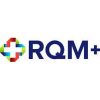As an integral part of the healthcare ecosystem, the medical device industry has experienced uncertainty and significant challenges during the COVID-19 pandemic. Along with many other stakeholders, these companies are now seeking strategies for remaining financially viable.
During this crisis and beyond, medical device manufacturers are becoming painfully aware of the weaknesses in the traditional fee-for-service payment model. At the same time, they are being introduced to value-based care and its significant advantages. With value-based care, providers receive payments based on measures, such as quality, efficiency, cost and positive clinical outcomes from private payers or government programs. This approach is about taking the long view to care—from the initial provider visit to months or years into the future. As a result, providers are incentivized to focus on long-term outcomes and the costs of a treatment or medical device.
To achieve success in this market, device manufacturers should consider working with providers to help contain costs and enhance outcomes. Stakeholder alignment is critical for value-based care, especially with payers that focus on the cost and impact on population health. When determining a target market, device manufacturers must consider the benefits, assume accountability for delivering better patient outcomes at a lower overall price and offset the potential profit decline early in a product’s lifecycle by partnering with a healthcare technology company with expertise in population health.
With rising pressure to curb healthcare costs, it has become important for device companies to demonstrate effectiveness and assume a certain amount of risk. Finding the right technology partner can empower better outcomes using real-time data aggregation, EHR connectivity and dynamic dashboards and quality reporting.
Before choosing a healthcare technology partner, however, its important for manufacturers to understand the impact that the COVID-19 pandemic has had on the healthcare system, the opportunities inherent to value-based care initiatives and the importance of quality measures and data reporting.
Pandemic Exposes Healthcare System Weaknesses
Impact on Physicians
Given the precipitous drop in elective and other nonessential care due to the COVID-19 pandemic, and as many hospitals and private physician practices struggle financially, the limitations of fee-for-service models have never been more evident. Industry experts believe that, post-pandemic, the gradual shift towards a larger share of patient care organization revenues coming from value-based contracts will continue. Organizations making this shift are moving carefully and thoughtfully, building systems that encompass quality benchmarks and risk-adjustment rules.
Adopting effective tools that will enable them to identify care gaps, access data that informs clinical decisions, improve quality and risk adjustment scores and enhance patient outcomes are key. Unfortunately, the data required for understanding the quality of the care being delivered to patients during this pandemic has been largely unavailable.
As a result, this vital information is not readily available to help clinicians improve care delivery now and for the future. This situation underscores how the current approach to quality and safety measurement remains too labor intensive, often causes substantial data delays and lacks sufficient standardization to allow for rapid data sharing. What is required is the ability to systematically collect information from providers or patients with the aim of assessing the quality of care provided to improve provider performance, treatment outcomes and efficiency.
Quality Measurement
In March 2020, just as preparations for the COVID-19 pandemic were underway, it became clear that measuring quality across the U.S. health care system would not be feasible. In response, CMS granted broad exceptions for collecting and submitting data for Medicare quality programs. Citing the need for hospitals and clinicians to focus instead on a potential surge of patients, it was suggested that data from the first six months of 2020 were not used in any of the current hospital-based performance or payment programs, or from other quality reporting organizations.
The pandemic environment has also highlighted how quality measurements fail to deliver information that can inform decision making where it’s needed most—at the point of care. Many claims-based quality measures, such as the Patient Safety Indicators, have a 12-month lag between the end of the care delivery period and the reporting to hospitals on their performance. Even non–claims-based measures, such as hospital-acquired infection measures, have long delays. For feedback to work it must be timely. What’s more, this prolonged delay makes the information less actionable and, during a health crisis, the delay is magnified, eliminating the significant opportunity to learn and improve.
Current quality measures also fail to have sufficient data standardization for the purposes of data sharing. The ability for health systems to compare performance data is critical for optimizing care—such as treating COVID-19. Defined performance measures that could help to understand how, for example, telehealth has affected the quality of care delivered to patients is non-existent. Access to a rapid tool for identifying and disseminating a standardized way of collecting data about new types of clinical information enables health systems to understand and improve performance.
HEDIS Measurement Reporting
Healthcare Effectiveness Data and Information Set (HEDIS) measures are used by 90% of health plans in the country for health care performance measurement. These measures are critical to the overall healthcare system because they ensure that payers are collecting and analyzing data as it relates to their performance. In fact, a number of payers started using value-based reimbursement models to help meet HEDIS benchmarks.
The COVID-19 pandemic, however, has impacted this data collection activity. The newly released guidance eliminates the requirement for Medicare Advantage (MA) plans to submit HEDIS 2020 data (for 2019 dates of service), because of the burden placed on healthcare workers. Instead, CMS says it will use last year’s performance (measure-level rates and ratings, based on 2018 performance) for the 2021 Star ratings.
Finding the Right Technology Partner
Typically, with traditional fee-for-service payment models, device manufacturers focus only on device quality and cost, while providers focus only on patient care and outcomes. Due to healthcare reforms and changes in reimbursement models, more device manufacturers are seeking ways to adjust their business models to thrive in the new value-based environment.
It will be important for them to find a point-of-care solution that effectively identifies open care gaps for proactive closure and provides payer-agnostic data to inform clinical, quality and risk adjustment programs for improvements in quality, risk adjustment scores and patient outcomes. A comprehensive population health management solution should be designed and optimized for payers, providers, accountable care organizations (ACOs), provider groups and managed service organizations (MSOs) that manage quality, risk adjustment and care for patient populations.
It is also important to find a solution with a robust HEDIS engine that is certified by the National Committee for Quality Assurance (NCQA) for all 97 measures for 2020 and refreshed annually for the most accurate data. Such a solution can facilitate the transition to value-based care by meeting the need for a complete interoperable population health management solution that aligns the payer, provider and patient with one solution that proactively closes care gaps, to ensure visibility into the patient’s complete health status and manage utilization thus facilitating better care planning and improved health outcomes.
Management of quality capabilities should:
- Use analytics to prioritize patient populations
- Harness electronic health records (EHRs) to reduce reporting lag
- Provide EHR extraction and data standardization using Continuity of Care Documents
- Use telehealth to drive care delivery
- Generate patient and provider scorecards
- Improve provider engagement and incentives
The technology solution should also offer real-time data insights captured from disparate sources, allowing 360-degree visibility into the patient’s health status based on information from EHRs, health information exchanges (HIEs), claims, labs, pharmacy and hospital sources. Through the aggregation of data from these sources, users gain transparency at the patient-level and provider-level through real-time data visualization that drives collaboration opportunities to break down departmental silos across the organization.
Beyond the Current Crisis
The key to value-based care is to tap into meaningful data and technology applications to efficiently manage patient-centric care that results in improved outcomes and lower costs. A value-based model with high-touch, prevention-focused care is about providing more care that is holistic and patient-centered now to prevent the need for far more expensive care down the road. The result: Better outcomes for patients and a better financial situation for primary care providers.
The COVID-19 pandemic has revealed critical challenges related to quality measurement. Implementing the recommendations for improvement will require a higher level of planning and coordination because the risks of failing to do so are substantial.







